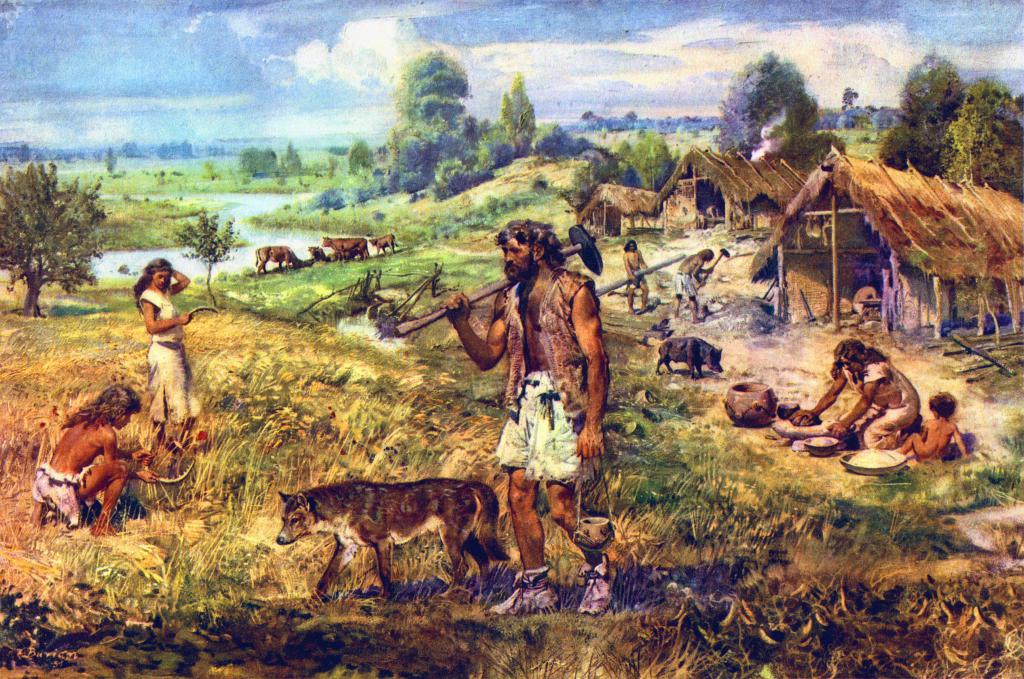18. How did trade develop and what are some of its effects?
Trade, always a staple of human culture, flourished with the introduction of agriculture. The domestication of animals in particular brought about sudden change because it was such a new invention. Oxen, cows, donkeys and goats among others were the first to be domesticated. They were used as beasts of burden and swung ploughs. This increased the work output of the society. In agricultural societies, because of the glut of food, not everyone needed to be scavenging for food. This led to people beginning to undertake new, specialized jobs that focused on one thing such as weaving, pottery, or tool-making. These specialized jobs also meant that people got used to repeating one task over and over. After a certain point, the job became mechanical and people became better at their craft, thus improving the output-per-person ratio. With this excess of food and benefits from specialization, societies began to produce more goods of value and as a result traded with each other more. Such a booming industry, trade, demanded the creation of a new specialization that dealt with trade, the merchant. The merchants not only traded, but also connected the ideas of different cultures otherwise worlds apart. These early traders soon became very wealthy and powerful, leading to the creation of inequality among members of a society. Trade also led to the creation of the material culture (also known as the economy), which consists of patterns of subsistence, the exchange of goods and services, technology, and the effects of industry on the environment.

Sebastian Varma
Works Cited
Geoff Riley, http://tutor2u.net/economics/revision-notes/as-markets-specialisation-trade.html[1]
CF Manual 69-70
Agropolis Museum. "Agricultural and Food Techniques." Agropolis Museum. Last
modified July 3, 2001. Accessed January 21, 2015.
http://museum.agropolis.fr/english/pages/expos/definitions/
animalpoweredagriculture.htm.
Oxen, cows and donkeys were first used as beasts of burden. They
carried things and swinged ploughs and harroughs.
Lienhard, John. "Domesticating Animals." Engines of Our Ingenuity. Last modified
January 21, 2015. Accessed January 21, 2015. http://www.uh.edu/engines/ epi1499.htm. Dogs, sheep, goats, cattle, pigs, horses and camels were domesticated. Animals that can be domesticated are herbivores or at least omnivores because it is too costly to feed carnivores.
Picture from http://libcom.org/files/images/blog/neolithic.jpg[[2]]